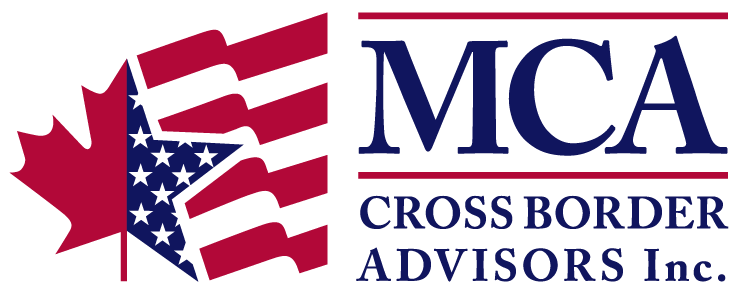Moving to the U.S. from Canada
An overview to get you ready for the land of opportunity
Whether it’s for family reasons, an exciting new work opportunity, the warmer climate, or something else entirely, moving to the U.S. from Canada is no small feat. Assuming you can find a suitable health insurance solution and you can obtain a U.S. visa or a green card allowing you to spend more time south of the border, the road south is still fraught with various complications and hurdles. The silver lining for most, however, is benefiting from lower income tax in the U.S. and other perks afforded to Canadian expatriates. To extract the most of these benefits, it is highly recommended to start the financial planning process as early as possible with a professional cross-border advisor.
Determining residency status in Canada for tax purposes
The Canadian tax system is founded on residency, so after leaving the country and no longer being a resident for tax purposes, Canadians are no longer subject to taxes on their worldwide income in Canada. It is important to note that exiting Canada for tax purposes does not mean giving up Canadian citizenship.
Canada Revenue Agency (CRA) evaluates the question of residency for tax purposes on an individual basis. First, CRA measures whether you intend to leave the country for good or only temporarily. Without the intention of becoming a resident in another country, an individual will remain a Canadian resident for tax purposes. Even if you spend the entire year abroad, physical presence is not a determining factor.
CRA considers two types of factors to determine residency for tax purposes: significant factors and secondary factors. Significant factors include the presence of a residence that is available for the individual in Canada and having a spouse or dependent remaining in Canada after leaving the country. CRA uses a weighted approach and places an enormous amount of weight on these two significant factors. The presence of even just one of these elements is sufficient to provoke the conclusion that an individual is still a Canadian resident for tax purposes. Secondary factors, however, are evaluated in their entirety; it would be a rare event indeed to see just one of these factors having a material impact on a Canadian residency conclusion. Secondary factors include, but are not limited to, the following: Canadian belongings, social ties with a Canadian organization (i.e., a religious organization), economic ties with a Canadian employer, health insurance from a Canadian territory, a Canadian vehicle, a Canadian passport, a seasonal residence, or a rented property. These factors tend to be much weaker and have a lower impact on determining residency for tax purposes.
CRA Form NR73 offers a way to ask CRA for its opinion on tax residency and your individual situation. Tread carefully here. This form is optional and we generally do not recommend that you submit it. The forms’ questions can be suggestive, and one can easily misinterpret the questions. Also, once the information is sent, it can be difficult to amend.
The conditions to meet non-residency for tax purposes can seem too rigid and make one less comfortable with the idea of leaving at all. Fortunately, another mechanism exists for taxpayers to become a non-resident. Individuals who fall under the definition of residency in both Canada and the US can utilize the treaty tiebreakers on residency in the Canada-US tax treaty to substantiate an exit from Canada while still maintaining some ties to Canada. Rather, speak with a cross border advisor to analyse your facts so that you can take a proactive approach to tax residency to ensure it aligns with your goals and objectives.

